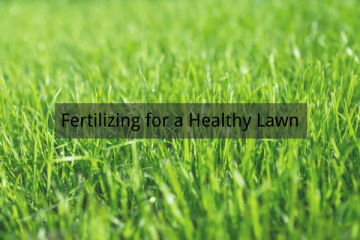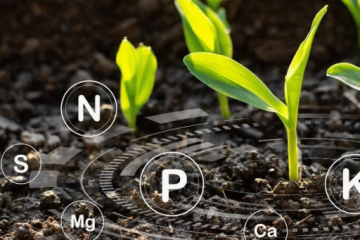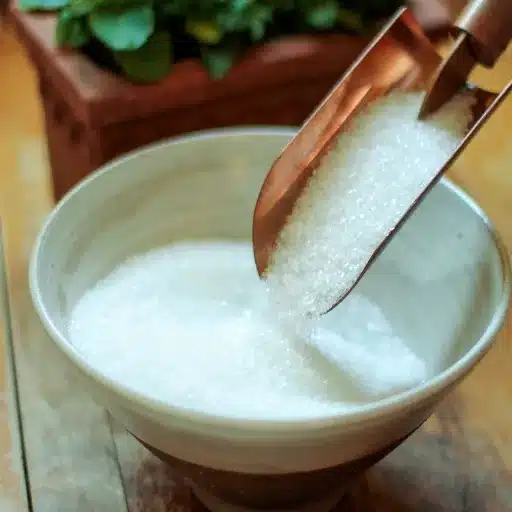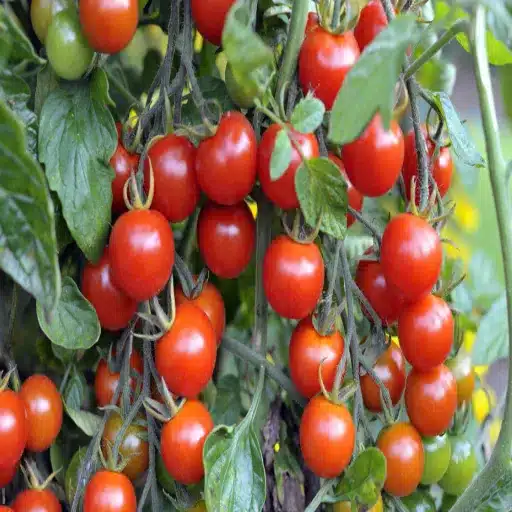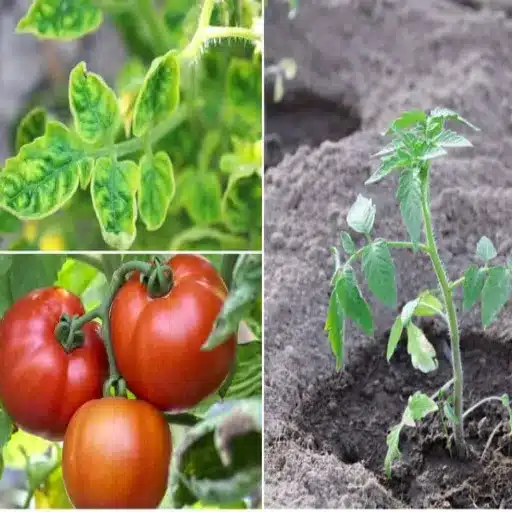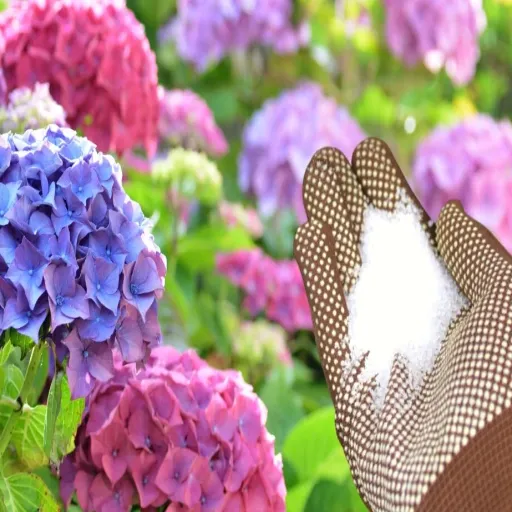Houseplant care involves understanding your plants’ nutrient needs and finding safe, effective ways to support their growth. Among the many fertilization methods available, Epsom salt has gained attention as a potential remedy for common plant deficiencies. Composed primarily of magnesium sulfate, Epsom salt offers key nutrients that are vital for plant health, particularly magnesium, which plays a critical role in photosynthesis and overall vitality. This article explores the science behind Epsom salt, its potential impact on potted plants, and step-by-step guidelines for safe and effective usage. By the end, you’ll understand whether Epsom salt could be a valuable addition to your plant care routine.
What Are the Benefits of Epsom Salt for Indoor Plants?
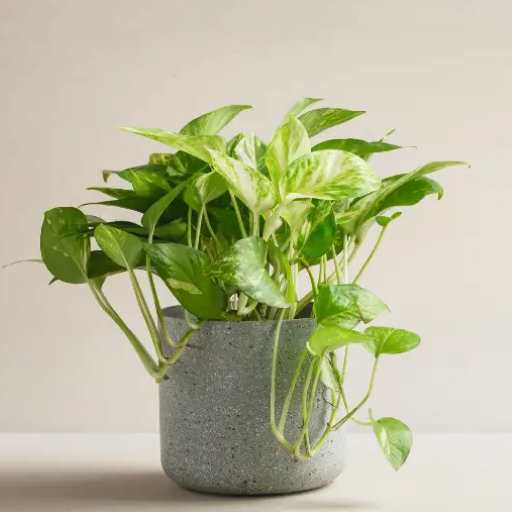
How Does Magnesium in Epsom Salt Help Indoor Plants?
The magnesium contained in Epsom salt is important for the well-being of indoor plants since it assists in supporting magnesium-containing chlorophyll, which is required for photosynthesis. Based on my understanding, magnesium permits plants to convert solar light into energy more efficiently and enables the uptake of additional vital elements such as nitrogen and phosphorus. Besides these, magnesium aids in the formulation of strong cell walls, which assists in the growth of green leaves.
- Magnesium Content: Epsom salt contains about 9.8 percent of magnesium in it. When dissolved in water, its roots readily take up the magnesium.
- pH Neutrality: Unlike several other fertilizers, Epsom salt is pH neutral, meaning it will not change the pH of the soil around it or cause undue disruption during application.
- Optimal Dosage: Epsom salt does not promote nutrient toxicity at the concentration of one to two tablespoons per gallon of water and provides a boost in magnesium.
These considerations explain why Epsom Salt should be magnesium supplements for indoor plants because of its relative ease of use alongside the observable symptoms such as yellowing of leaves along the veins (interveinal chlorosis). Still, I suggest not rushing to use Epsom salt without proper analysis of the plant’s needs to avoid excessive use.
Can Epsom Salt Improve Chlorophyll Production?
Yes, Epsom salt can enhance chlorophyll production owing to its magnesium content. Magnesium serves as the nucleus in a chlorophyll molecule and is critical to the process of photosynthesis. Epsom salt, containing magnesium in bioavailable form, overcomes deficiencies that impede chlorophyll synthesis.
- Magnesium Content: Epsom salt (magnesium sulfate) has about 10 percent magnesium as a sulfate compound, making it a readily accessible resource.
- Application Rate: One measure recommends the dissolution of 15 to 30 grams of Epsom salt per gallon (3.8 liters) of water for foliar sprays or soil application. This provides adequate supply without risking toxicity.
- Symptoms of Deficiency: Along with other symptoms, Epsom Salt is beneficial for plants with interveinal chlorosis or those with yellowing leaf veins, suggesting undersupplying magnesium is limiting to chlorophyll production.
- pH Consideration: Since Epsom salt does not change soil pH, it is neutral and suitable for many species of plants and soils.
Evaluating magnesium deficiency through a soil test or a visual check must be done prior to the application of Epsom salt, as overuse could create complex nutrient disproportions which puts the plant’s health in jeopardy.
Does Epsom Salt Help with Magnesium Deficiency in Plants?
Indeed, correcting magnesium deficiency with Epsom salt can be effective when it is applied properly. Magnesium is needed for the production of chlorophyll, photosynthesis, and other vital processes for the growth of a plant. Epsom salt or magnesium sulfate (MgSO₄·7H₂O), provides magnesium and sulfur in a form that is readily available to plants.
- Recommended Rate of Application: For most plants, dissolve 1 to 2 tablespoons of Epsom salt in a gallon of water and use it as a soil drench or foliar spray every 4-6 weeks during the growing season.
- Timing: It is best to apply in the early morning or late evening to avoid the sun’s evaporation and increase the chances of nutrient absorption in the plant tissues.
- Testing: A soil test can be conducted to check for magnesium levels. The ranges of 25 to 50mg per liter of soil, regardless of soil type are considered ideal.
Moderation is essential with magnesium since its excessive application can upset the nutrient balance in the soil, affecting crucial nutrients such as calcium and potassium. The right diagnosis, combined with moderation, yields optimal results.
How to Use Epsom Salt as Fertilizer for Houseplants?
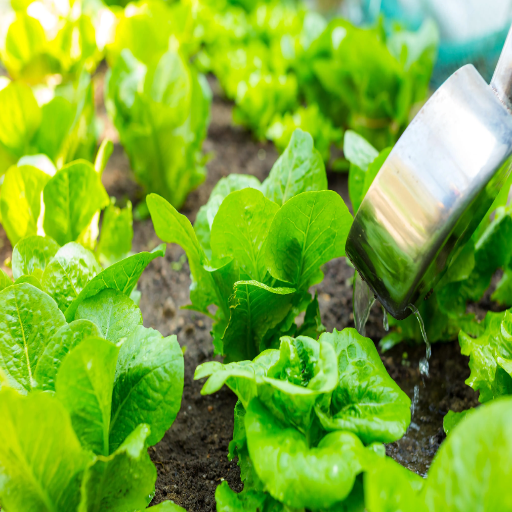
What is the Right Amount of Epsom Salt to Use?
The exact amount of Epsom salt to use when fertilizing houseplants varies with the kind of plant and its need for magnesium. As a general rule, 1-2 tablespoons of Epsom salt should be dissolved in one gallon of water. This solution can be applied once a month as a foliar spray or directly to the soil. Further, for smaller plants, to prevent over-fertilization, the concentration can be reduced to 1 teaspoon of Epsom salt per gallon of water.
- Concentration Range: To avoid over-fertilization while still providing adequate magnesium, 1-2 tablespoons of Epsom salt per gallon of water is recommended; 1 teaspoon is appropriate for smaller plants.
- Frequency: Plant health is best sustained with monthly applications, as this extent of magnesium is not overwhelming.
- Water-solubility: Magnesium sulfate (Epsom salt) is a highly soluble substance with water which makes it readily available for plant uptake.
- Avoiding overuse: Moderation is the best practice when it comes to horticulture, due to the potential of posing problems for the absorption of other nutrients like calcium and potassium.
Assemble the dosage according to factors like plant size, species, and documented cases of nutrient deficiency for maximum results.
How to Dilute Epsom Salt for Plant Use?
When preparing Epsom salt for plant care, follow these guidelines and appropriations for suitable application.
- General Purpose Solution: For broad-purpose care, add 1 tablespoon (around 15 grams) of Epsom salt to 1 gallon (3.8 liters) of water. This solution can be safely administered as a foliar spray or soil drench for most plants.
- Seedlings and Young Plants: Use a more diluted solution of 1 teaspoon (approximately 5 grams) per gallon (3.8 liters) to prevent damage to fragile roots from excess magnesium.
- Applying as a Foliar Spray: Apply the solution in the early morning or toward dusk to minimize the chances of leaf burn from direct sunlight.
- Frequency of Application: Depending on the plant type, apply every 3–4 weeks, but avoid overuse as high magnesium can negatively impact other crucial nutrient uptake.
These suggested methods follow optimal nutrient balances alongside the solubility characteristics of Epsom salt, guaranteeing efficacy devoid of plant health risk. Monitor the plant’s health post-application to change concentration or frequency as needed.
Can Epsom Salt Be Used for Foliar Feeding?
The use of Epsom salt in foliar feeding is effective for magnesium and sulfur delivery directly to leaves. As a spray, the nutrients are absorbed quickly, making it easier to rectify deficiencies in a short time.
- Dosage: Apply 1-2 tablespoons (15-30 grams) of Epsom salt per 1 gallon (3.8 liters) of water. This ratio will provide adequate magnesium and sulfur without burning the leaves.
- Application Timing: Apply in the early morning or late afternoon to reduce sunlight exposure and overheating from scorched leaves.
- Frequency: Recommended bi-weekly or by the severity of the deficiency.
This method offers flexibility in nutrient delivery but must be coupled with close supervision of leaf condition to avoid over-application.
How Much Epsom Salt Per Gallon of Water Should Be Used?
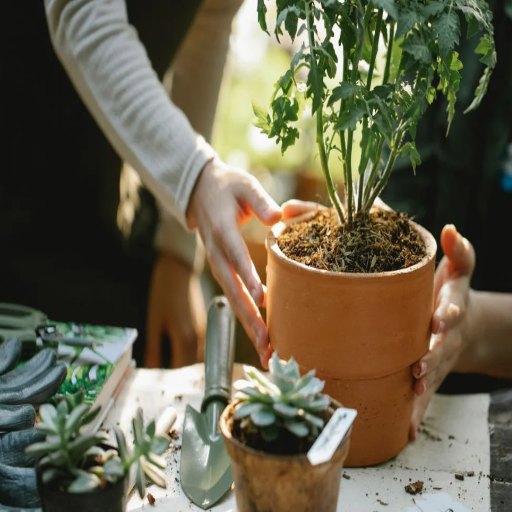
Is One Tablespoon of Epsom Salt Sufficient?
For most purposes, one tablespoon of Epsom salt per gallon of water should work just fine. This ratio roughly provides 1.2 grams of magnesium and 1.7 grams of sulfate for every liter of solution, which is usually enough to remedy any magnesium or sulfur shortfall in a plant without excessively oversaturating the soil or leaves.
- Plant Type: Some plants like tomatoes, roses, and peppers will thrive on this ratio, while others will need either more or less concentration.
- Application Method: For foliar spraying, one tablespoon per gallon will allow maximum absorption without burning the leaves, which is ideal. Conversely, soil drenching can afford slightly higher amounts, although caution still needs to be exercised with over-salinity.
- Deficiency Severity: Milder deficiencies tend to do quite well with this ratio. More severe deficiencies do well with a slight increase in concentration, but ideally, some testing of soil or tissue magnesium levels will need to be done.
Avoid making too many changes at once as that may lead to nutrient imbalance. Make sure to monitor how the plant responds and adjust the concentration accordingly.
How Often Should You Apply Epsom Salt Solution?
The Epsom salt solution application frequency varies with the type of the plant, its growth stage, and magnesium deficiency. During the growing season, foliar applications can be done every two weeks to four weeks. For soil applications, mixing 1-2 tablespoons of Epsom salt per gallon of water and applying it to the soil in mid-month is generally adequate.
- Foliar application rates: 1 tablespoon per gallon of water for spraying on leaves. It is important to attain full coverage without excessively wetting the leaves.
- Soil application rates: 1 to 2 tablespoons of Epsom salt for each gallon of water used, poured at the base of the plant for root uptake.
- Timing: Best done in the early morning and in the late afternoon to lessen evaporation and uptake.
- Considerations: Control levels of magnesium first to prevent excess salinity, nutrient antagonism, or block and die back.
To guarantee effectiveness, observation of the plant’s response requires constant monitoring, and changes are made only on the growth pattern or lab test results. Application beyond this level will most likely disrupt the balance of nutrients benefitting the system.
Can Epsom Salt Harm Indoor Plants?
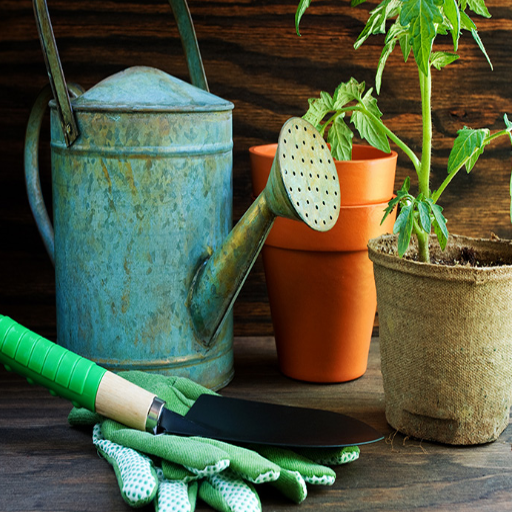
What Happens if You Use Too Much Epsom Salt?
From my perspective, using a lot of Epsom Salt can create a soil concentration of magnesium sulfate, which can greatly interfere with the soil nutrient system. For example, magnesium on its own tends to disrupt calcium and potassium intake, which greatly aids in the plant’s development. This disruption can lead to a range of issues such as leaf pale yellowing, weak stems, or inertia to any growth.
- Magnesium Levels: The ideal range of magnesium concentration in soil is between 50-120mg/kg soil, any higher concentration would be toxic.
- Salinity: Epsom salt overuse could raise soil salinity, which directly decreases water retention and, in return, could damage root systems.
- Nutrient Ratios: Calcium to magnesium ratio and potassium to magnesium ratio should be monitored as balanced in the ratios is crucial to nutrient synergy.
To mitigate such problems, I suggest not using more than 1 tablespoon of Epsom salt per gallon of water without testing the soil or foliage nutrient levels first to justify its use.
Which Plants Don’t Like Epsom Salt?
Based on my understanding and experience, not all plants are particularly responsive to Epsom salt applications, especially those that thrive in acidic soils. Rosemary, sage, and some carnivorous species (like Venus flytraps and pitcher plants), for example, struggle when elevated levels of magnesium are added. These types of plants that are adapted to low-nutrient soils are highly likely to struggle with toxicity or disrupted nutrient uptake due to the excess application of Epsom salt.
- Magnesium Levels in Soil: Magnesium levels exceeding 120 parts per million tend to create nutrient imbalances where calcium and potassium uptake is inhibited.
- Ideal Soil pH: Several brittle plants require soil that is mildly acidic or neutral (pH 6.0 to 7.0). With Epsom Salt, over-application changes this equilibrium, leading to unfavorable terrain.
- Uptake Ratio of Nutrients: Competition among these nutrients is avoided with the calcium-to-magnesium ratio of 5:1 and 2:1 for potassium to magnesium.
For specific species of plants where the use of Epsom salt is in question, trying to measure the magnesium levels and pH of the soil beforehand is important for ensuring that its application meets the physiological demands of the plants.
What Other Plants Like Epsom Salt?

Is Epsom Salt Good for Tomato Plants?
Epsom salt aids tomato plants as long as it is applied under the right conditions. Most tomatoes suffer from a lack of magnesium, which a tomato plant shows through interveinal chlorosis, the yellowing of the leaves while green veins remain intact. Epsom salt contains magnesium sulfate, which solves this problem by providing magnesium. Magnesium helps in the processes of photosynthesis and the taking in of nutrients and, along with that, helps in the development of fruits. But it should also be remembered that there needs to be soil testing done to confirm the deficiency, as applying Epsom salt will only worsen the imbalance in nutrients if done blindly.
- Application Timing: At the first sign of magnesium deficiency or during the initial growth phase.
- Measurement for Spray Mixture: For every 3.8 liters of water, a tablespoon of Epsom salt should suffice if you’re planning to spray it. For foliar application, 1-2 tablespoons (15-30 g) will do.
- Regularity: Reapply if needed every 15 days for 30 days.
- Prevention of Overuse: Using Epsom too much can throw the balance off too much potassium and calcium in the soil and result in further harm to the plants.
Ensuring that Epsom salt testing and application are done will ease the growth of tomato plants while avoiding any negative repercussions caused to the plant.
How Does Epsom Salt Benefit Potted Plants?
Supplementing potted plants with magnesium salt aids in the growth of the plant by auguring sulfur and magnesium (Mg) as nutrients. These nutrients become smaller in a pot due to lack of soil and leaching of nutrients. The leaching of nutrients is a common trait of containerized environments. Magnesium is instrumental for photosynthesis since it acts as a nucleus for chlorophyll, while sulphur is needed by the body for the formation of proteins and essential enzymes.
- Rate of Application: For potted plants, a teaspoon or two of Epsom salt (5 – 10 grams) must be diluted in a gallon (3.8 Liters) of water.
- Fertility: In the growing season, it is advised to ward off problems of deficiency every 4-6 weeks.
- pH Neutrality: This sort of salt does not modify the pH value of the soil, which makes it incredibly good for the health of many kinds of plants.
- Dose of Plant Specifically: It may be helpful to change Epsom salt application amounts basing on the certain species of plant to assume leave the rate of magesuim and suphur required by the plant. For example, promiscuous withered crops such as sleepy tomatoes would need more zest than frugal plants undergoing hibernation.
Applying Epsom supplements aids in the control of the nutrient in the potted plants , thus enhancing the wellbeing of the flowers and fruits. It also controls the aid of over-fertilization. The wellbeing of the plants as well as the soil must be controlled and cared for in order to achieve favorable results.
Reference sources
Frequently Asked Questions (FAQs)
Q: How is Epsom salt beneficial to houseplants?
A: Epsom salt can be beneficial to plants as it provides magnesium, which is essential for photosynthesis. It helps plants absorb phosphorus and potassium, improving overall plant health and growth.
Q: Can I add Epsom salt to all types of houseplants?
A: While Epsom salt can be used on many houseplants, it is essential to know what your specific plants need. Some plants may benefit more than others.
Q: How do I apply Epsom salt to potted plants?
A: A common way to use Epsom salt for houseplants is to dissolve a tablespoon in a gallon of water and water your plants with this solution. Ensure that you water around the base of the plant, allowing the roots to absorb the nutrients.
Q: Will Epsom salt harm my plants if overused?
A: Yes, using concentrated amounts of Epsom salt can harm your plants. It is crucial to use it sparingly, as excess magnesium can accumulate in the soil and negatively affect plant growth.
Q: Can Epsom salt kill pests in the garden?
A: While Epsom salt is not a pesticide, it can deter some pests. However, it is not a guaranteed solution for pest control and should not be solely relied upon to kill pests.
Q: How often should I add Epsom salt to my plants?
A: Adding Epsom salt to your plants every month or so can be beneficial. However, frequency depends on the plant type and the soil’s existing nutrient levels. Monitor your plants and adjust accordingly.
Q: Is Epsom salt the same as table salt?
A: No, Epsom salt and table salt are different. Epsom salt is made of magnesium sulfate, whereas table salt is sodium chloride. Using table salt on plants can harm your plants, while Epsom salt can help them when used correctly.
Q: Can I use Epsom salt for both indoor and outdoor plants?
A: Yes, Epsom salt can be beneficial for both indoor and outdoor plants. Just ensure you are using it appropriately and not in concentrated Epsom amounts that could harm the plants.
Q: What signs indicate that my plants need Epsom salt?
A: Yellowing leaves or stunted growth can indicate a magnesium deficiency, suggesting that Epsom salt might be beneficial to your plants. However, always confirm with a soil test before adding Epsom salt.
Q: How can I ensure I’m using high-quality Epsom salt?
A: Ensure that you are using pure, unscented Epsom salt without any additives. Reading labels and purchasing from reputable gardening suppliers can help keep your plants looking healthy.

